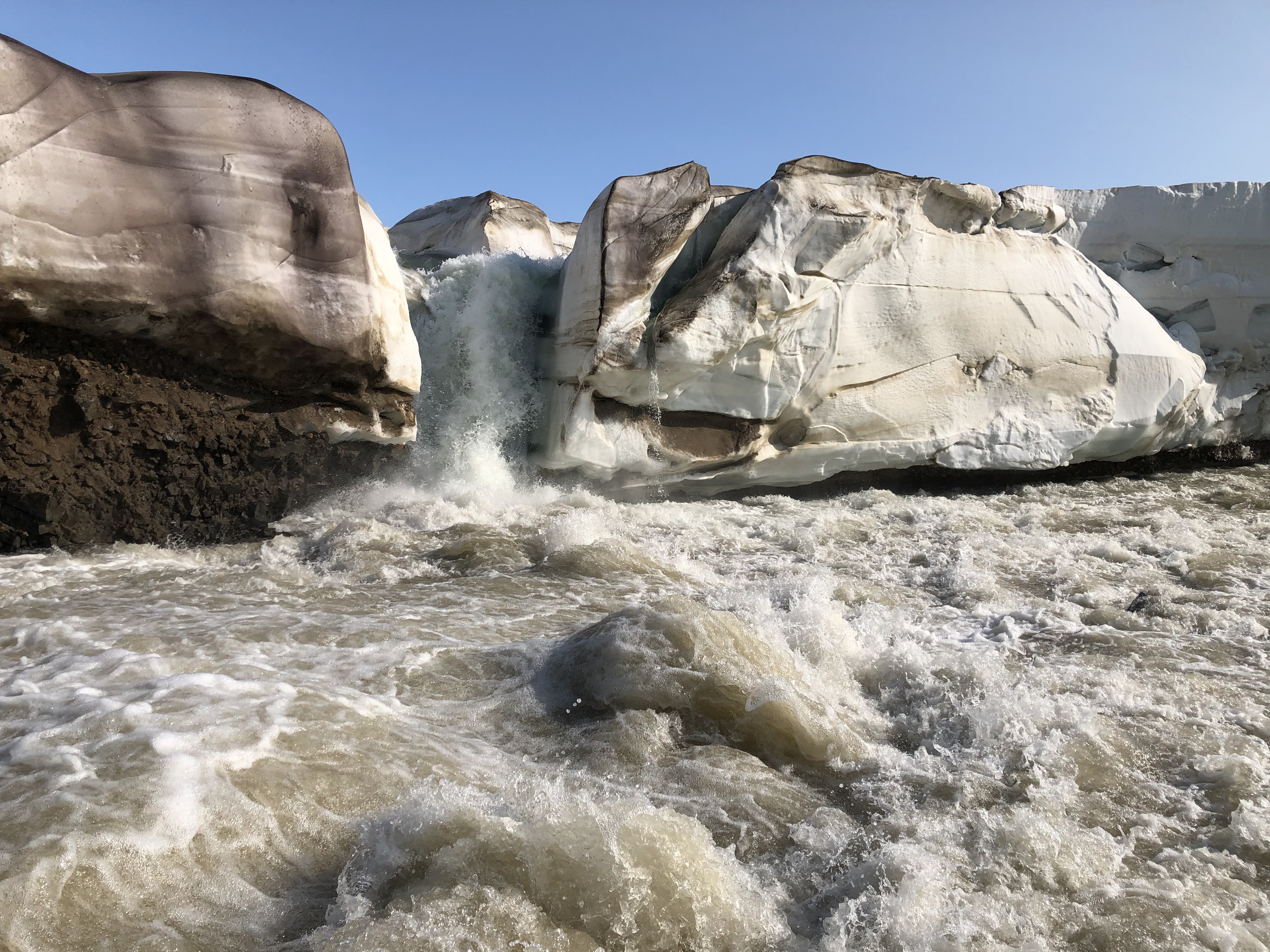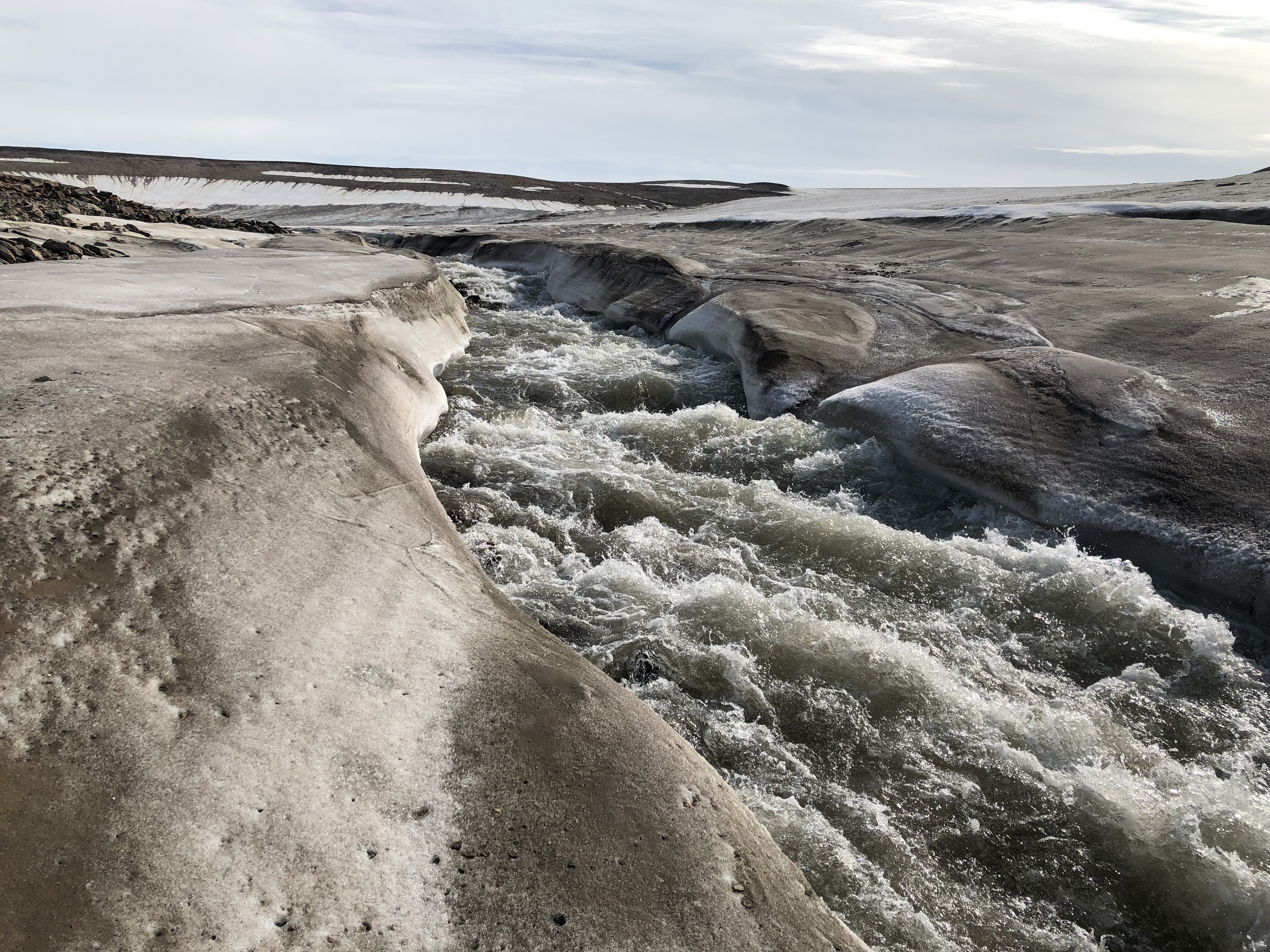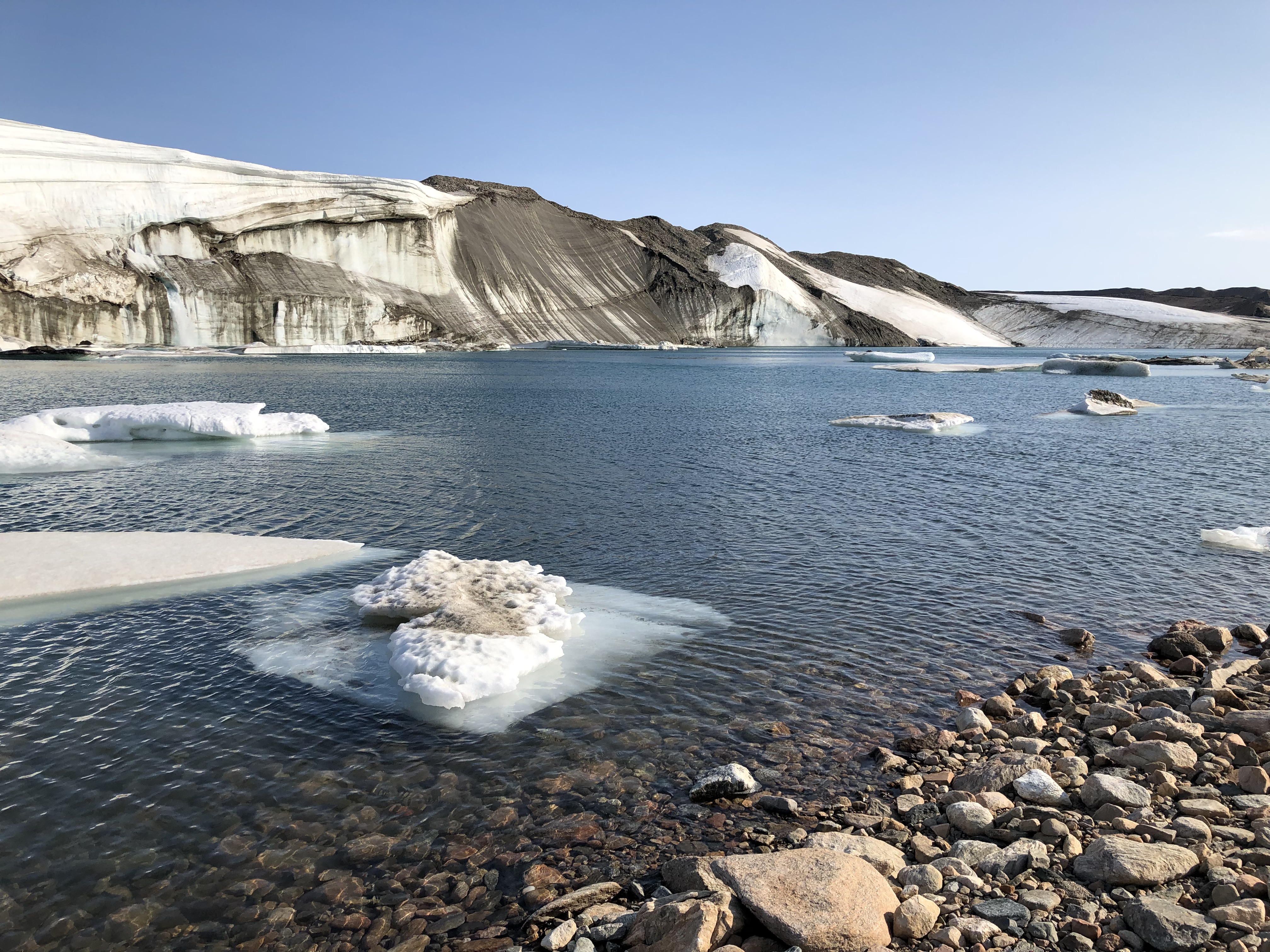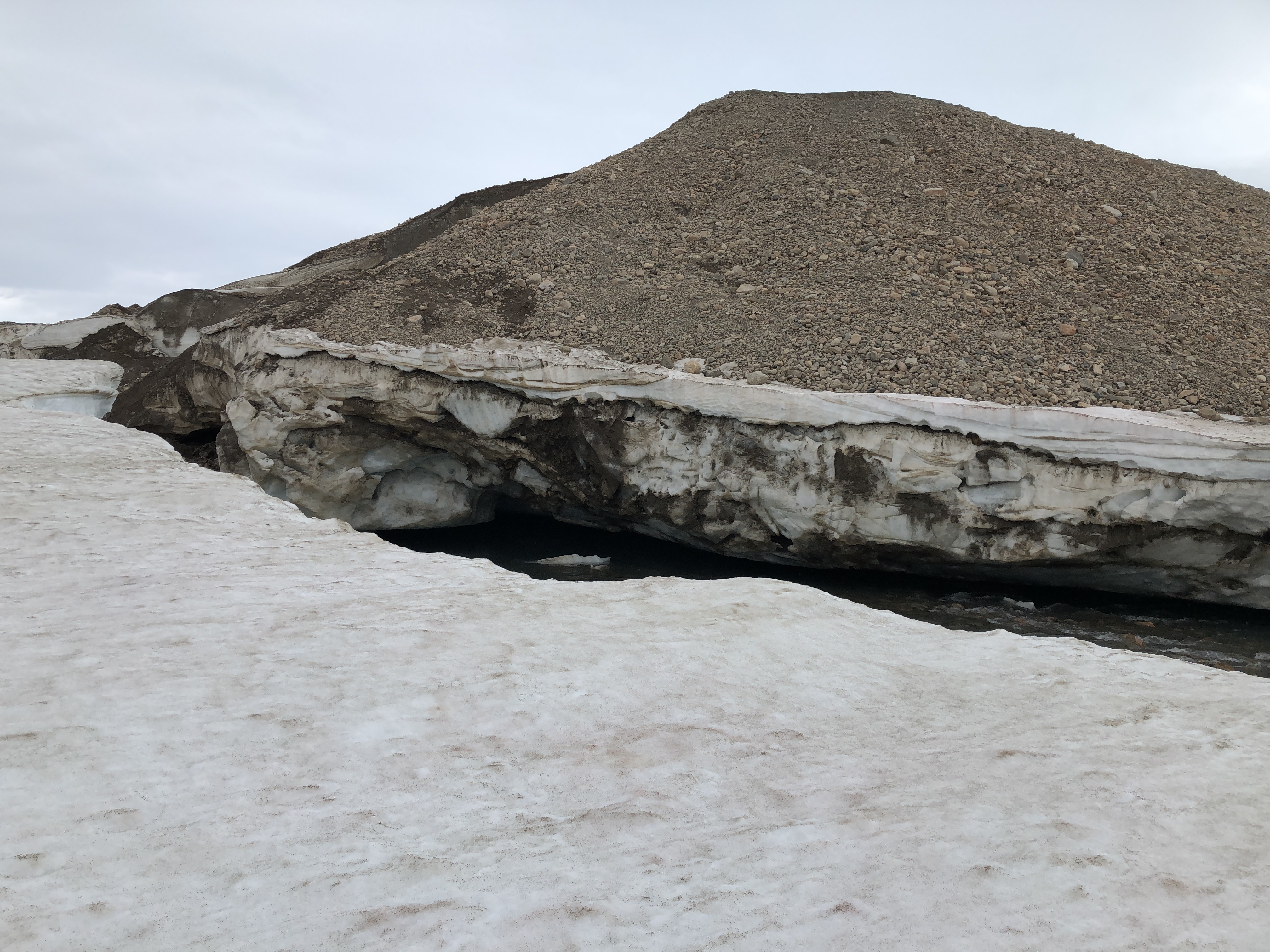As Greenland’s ice melts, its rivers dump more carbon into the Arctic Ocean
A new calculation projects the melting ice sheet will contribute a third more carbon than previously thought.
On the edge of the Greenland ice sheet, a narrow strip of land is exposed. About a meter down into that land is frozen soil that is up to 30,000 years old, the remnants of ancient plant life on the giant island.
As the ice sheet melts and water flows out of rivers to the sea, it is carrying something along the way — the carbon it picks up as it percolates through the ground and thaws the permafrost, along with carbon within the deteriorating ice sheet itself.
Now scientists are starting to understand how much carbon is being dumped into the sea through this melt process and what it means for the marine ecosystem.
“What’s happening in the ice influences what’s happening in the Arctic Ocean,” said Jeff Welker, a biological sciences professor at the University of Alaska Anchorage, longtime Greenland researcher and co-author of a newly published study that quantifies the amount of carbon being swept by ice melt through the ground and into the marine ecosystem. The calculation results in a range: 0.29 to 0.45 teragrams (290,000 to 450,000 metric tonnes) of dissolved organic carbon exported from rivers to the sea each year as the Greenland Ice Sheet melts, an estimate that is more than a third higher than what was previously believed.
The study, published in the journal JGR Biogeosciences, uses data from measurements at five Greenland rivers, four of them fed by the ice sheet’s melt and one that is not glacially sourced. The measurements, taken from 2010 to 2012, revealed that the pattern of carbon deposit changes over the course of the melt season. In the spring to mid-summer, carbon dumped by rivers into the ocean is dominated by modern plant matter. Later in the season, the mix switches — more of the deposited carbon is from melted glacial ice itself, and more of what is being deposited is aged.

As the Arctic climate warms and Greenland melt accelerates, yet more ancient carbon is expected to flow out into the sea, the study says.
With melt and iceberg calving combined, the Greenland ice sheet lost about 280 gigatons of ice annually between 2002 and 2016, according to NASA observations.
Welker, who has been making research trips to Greenland regularly since the 1990s, says year-to-year changes there are obvious. A ramp that provides denizens of the Thule station access to the ice sheet, for example, used to be gently sloped and wide and now it is almost knife-edge narrow and steep-sloped.
But this year’s melt, with a series of record and near-record episodes, has created changes visible in just the course of a few weeks.
At the end of July, heat records were set at the ice sheet’s highest point, Summit Station, and melting occurred at about 90 percent of the ice sheet, according to the National Snow and Ice Data Center. From July 30 to Aug. 3, melt runoff totaled about 55 billion tons, 40 billion tons more than the 1981-2010 average runoff for the same time period, the center said. The Aug. 1 loss of 12.5 billion tons, linked to Europe’s extreme summer heat, was a single-day record. Melt also spiked in early June, and for the year to date, this year’s ice loss due to melt — over 250 billion tons from — is similar to that for the record-melt year of 2012, the NSIDC said in a mid-August update.

Welker, who is also affiliated with Finland’s University of Oulu and the first research chairman appointed by the University of the Arctic consortium, has other evidence showing how this year’s melt is different from previous patterns.
He leads the water-isotope studies that are part of the larger National Science Foundation-funded MOSAiC Arctic research program, and this year’s melt is showing up in the water vapor’s molecules, he said.
This year’s melt has been so extreme that the water pooling on the ice sheet has created atmospheric vapor with the same chemical footprint as the nearby ocean water. That is a big change from what was considered normal, when the vapor above the ice sheet was the product of direct evaporation from frozen surfaces, with no melt-pond stage, and its isotope signature was completely different from that of the marine waters, Welker said.

The focus on carbon release through meltwater flow into the ocean is relatively new, in Greenland and elsewhere in the Arctic.
For years, it has been well understood that permafrost thaw is putting previously locked carbon, including methane, into the atmosphere. It is something that Welker and his colleagues have studied specifically at Greenland. It’s also well understood that carbon in the atmosphere is absorbed by the open ocean, and increased carbon has triggered a troubling chemical change known as ocean acidification. “There’s a gaseous carbon cycle, and there’s an aqueous carbon cycle,” Welker said.
Through the aqueous cycle, the old carbon “now comes back to life and is starting to cycle itself into the food web,” he said.
The Arctic Ocean already has larger amounts of dissolved organic carbon at its surface than other oceans, thanks to river flow and permafrost thaw. Now, scientists and Arctic residents are seeing transformations in mammal, seabird and fish populations, making the study of the river flow more urgent, Welker said. “This process may be very much a key to changes in the food web,” he said.
Whether it is good or bad might depend on perspectives and species, Welker said. Some species may be benefiting from the increased nutrition in the waters, he said. But more carbon also increases acidification risks, he said.
On the other side of the Arctic, a UK-German science collaboration is also studying the effects of increased carbon discharges from Siberian rivers into the ocean. The collaboration includes a project called Changing Arctic Carbon Cycle in the Coastal Ocean Nearshore, which is studying effects of flow from the rivers, sites of thawing permafrost, into the near-shore ecosystems of the eastern Siberian coast. As in the waters off Greenland, the effects of increased carbon, freshwater and nutrition are projected to be complex.

